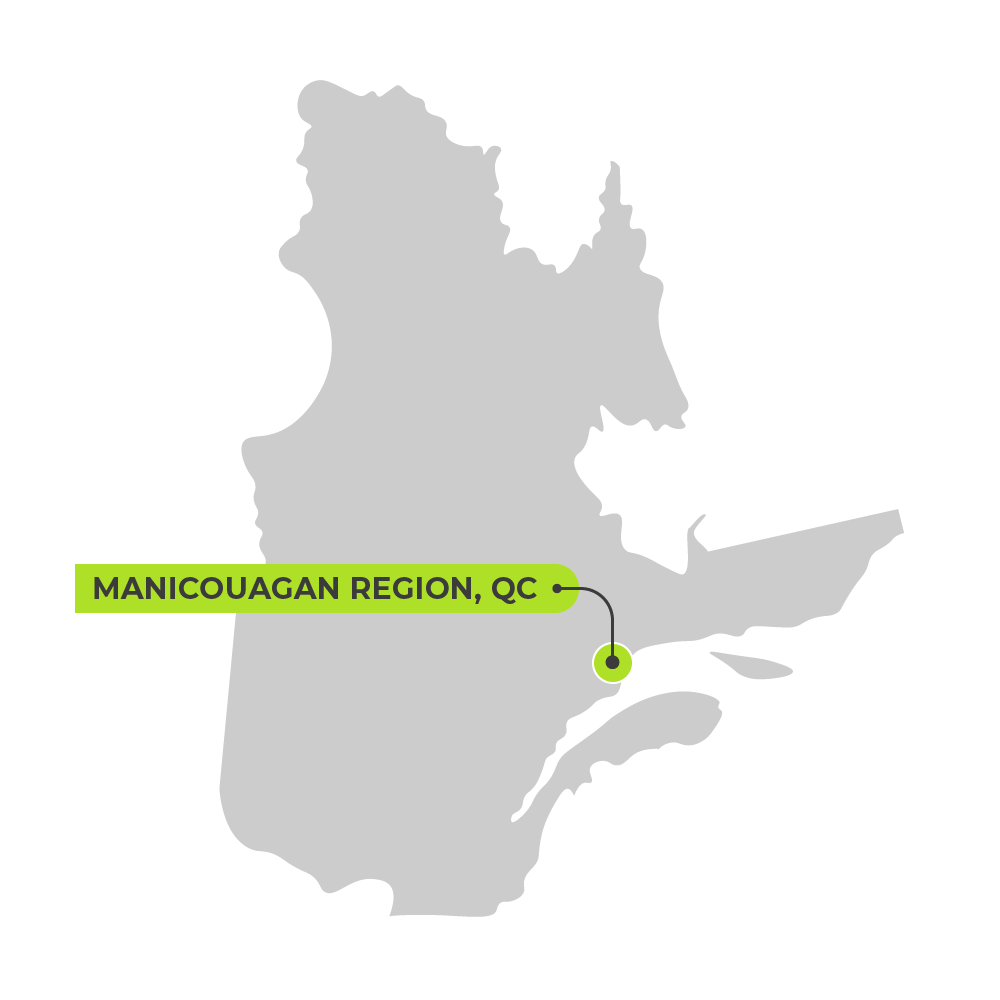
The integrated waste management complex in Quebec’s Manicouagan region is the first of its kind in the province to collect, treat and recover value from waste—all in one place.
Results

3,755 tonnes
of additional waste diverted from landfill

$488,500
in collection costs saved

16
permanent jobs created
In an initiative completed in 2014, the Manicouagan municipalité régionale de comté of eastern Quebec (a regional county municipality) centralized the waste management processes of its eight local municipalities. Baie-Comeau, the region’s central hub, is now home to Manicouagan’s integrated waste management complex. The complex includes a transfer centre, an eco-centre, a reuse store and a community warehouse.
The Régie de gestion des matières résiduelles de Manicouagan (RGMRM), the residual materials management board for the Manicouagan region of eastern Quebec, began the project in 2011, to streamline the region’s collection, treatment and recovery of waste materials. The RGMRM oversees waste management for the region’s eight member municipalities: Baie-Comeau, Baie-Trinité, Chute-aux-Outardes, Franquelin, Godbout, Pointe-aux-Outardes, Pointe-Lebel and Ragueneau.


In the new integrated waste management complex, a transfer centre makes it possible to process waste and recyclable materials separately in the same building.
At the ecocentre, residents separate their household hazardous waste, wood, metal and bulky items, such as furniture and appliances, into containers. Items in good condition, along with other items made from recycled materials, are sold at the reuse store. The warehouse provides storage space for local community organizations.
The RGMRM initially used an electric baler to press waste and recyclables into compact bundles for shipping. The baler was intended to reduce the number of trucks needed to transport them, which in turn would reduce GHG emissions. However, the amount of organic material remaining in the waste made it difficult to bale. The RGMRM reconsidered this component of the project as a result. The use of the press for recyclable materials reduced and optimized transportation costs over eight years, from 2012 to 2019. Ultimately, the drop in global demand for materials recovered through curbside recycling prompted the RGMRM to retire the baler.
The RGMRM’s unique, one-stop approach to waste management has made the complex a popular destination for area residents. Trips to the eco-centre and reuse store are now a part of residents’ daily lives, instilling a strong sense of pride in the community. The site boasts up to 26,000 visits per year from a population of about 29,000. The welcoming and attractive reuse store, supplied by onsite workshops and local artisans, has been especially well-received.
The project’s focus on recovery and reuse has significantly reduced the volume of waste sent to landfill. Consolidating waste management services has also reduced collection costs for participating municipalities and created 16 new permanent jobs at the complex.
The success of this project clearly showcases the benefits of centralized waste management for all municipalities. This one-stop approach to waste management is an inspiring example that can be replicated in any community.
Before the reuse store opened, I had no choice but to buy just new. It certainly changed the way I shop."
—Linda Girard, resident of Ragueneau
Want to explore all GMF-funded projects? Check out the Projects Database for a complete overview of funded projects and get inspired by municipalities of all sizes, across Canada.

